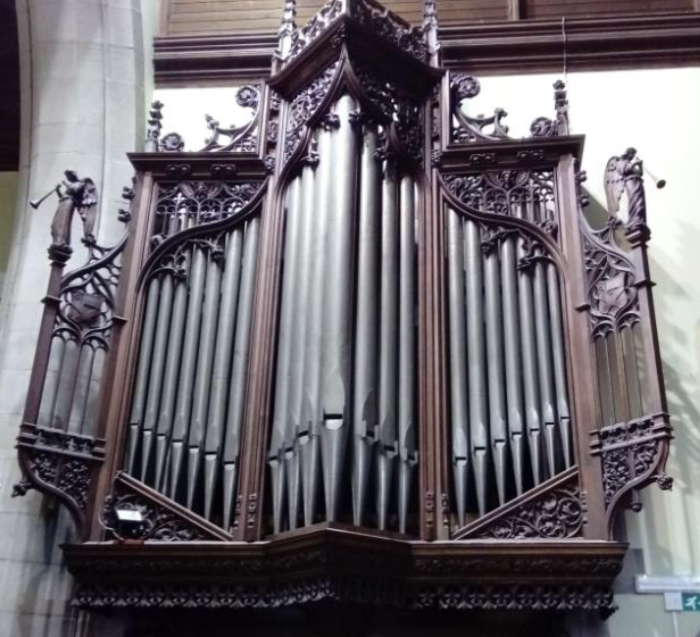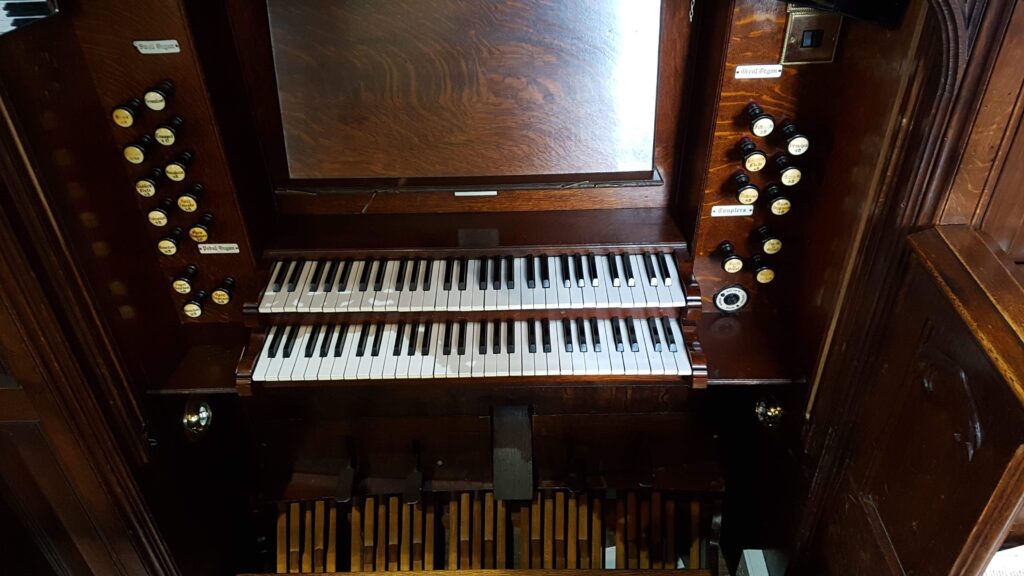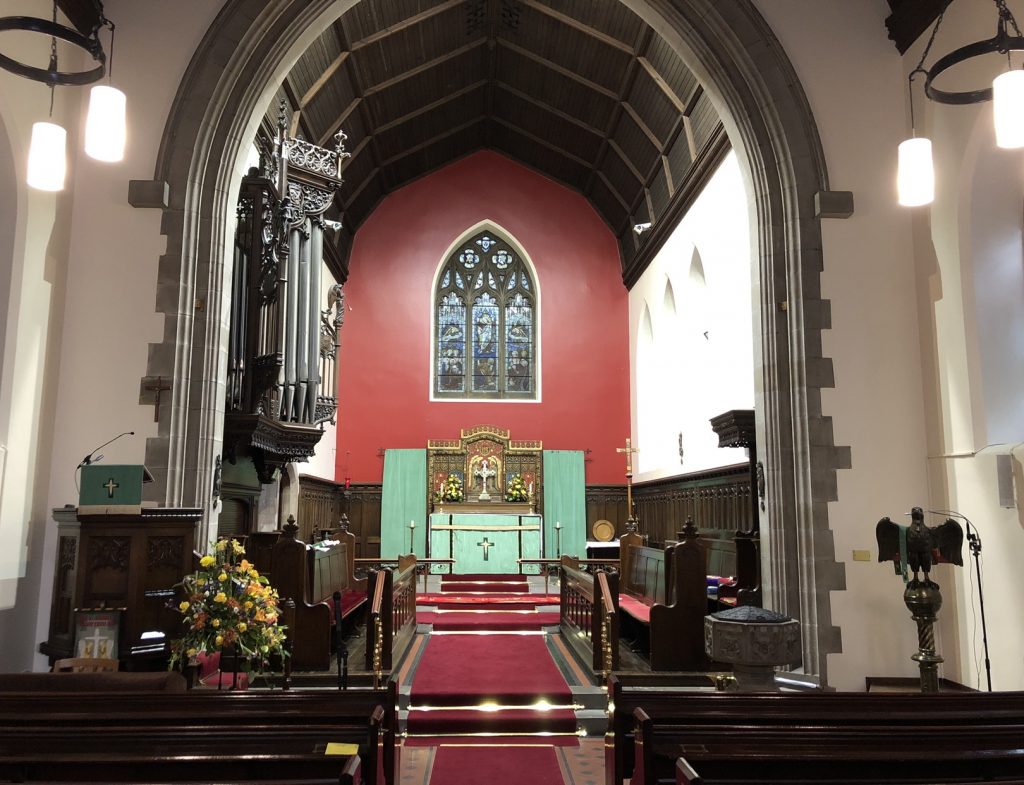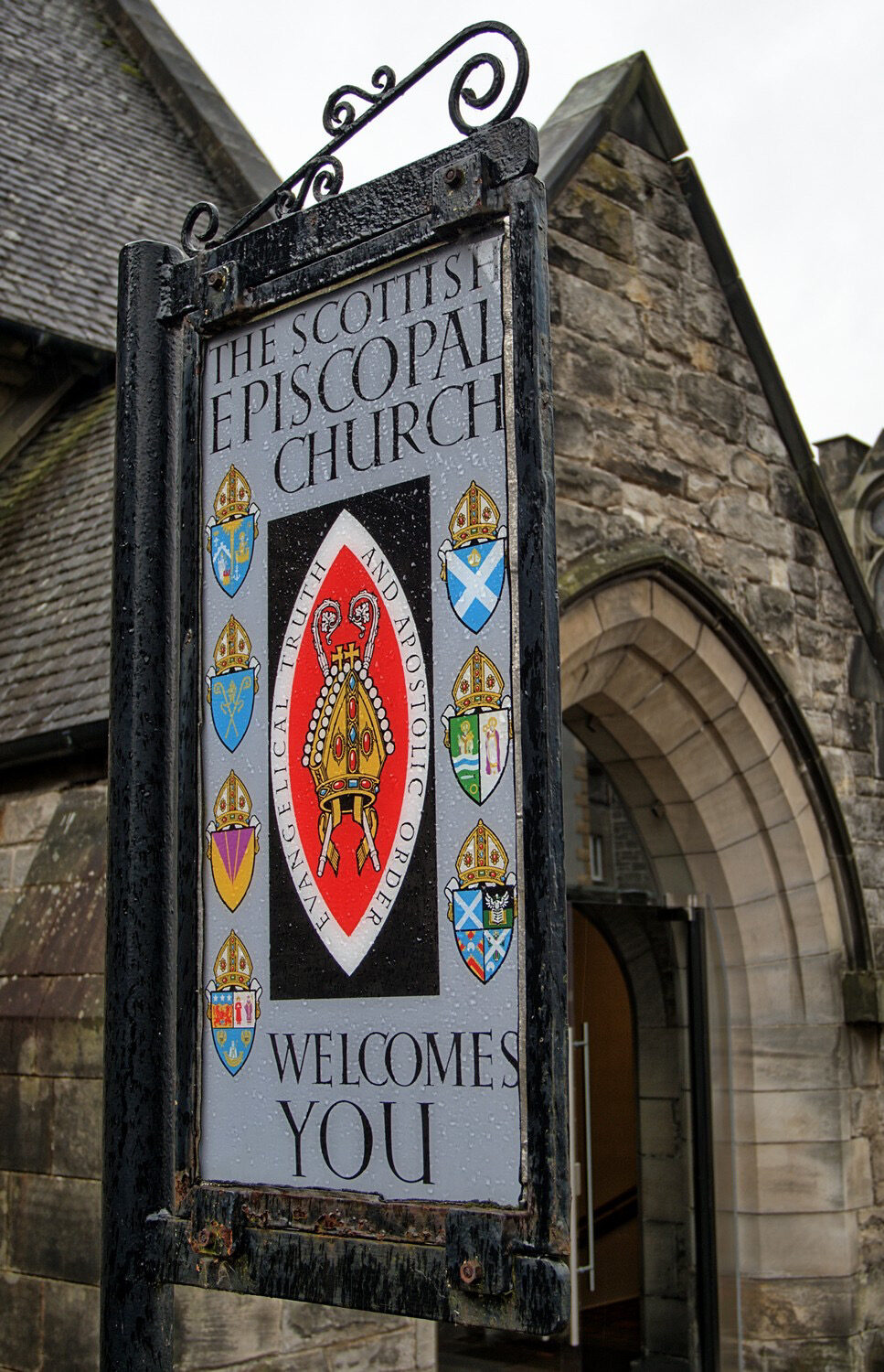
You can listen to a range of our Organ Music on our YouTube channel Music Playlist.
The Hamilton Two Manual Pipe Organ was originally built in 1830 by David Hamilton of Hamilton & Muller, Edinburgh. Pre dating even the original Trinity Chapel when the new church was opened in 1891 the organ was moved and rebuilt into the new church between 1891-1894 by Charles and Frederick Hamilton of Edinburgh (who had their workshop at 4 Hope Street Lane), to a specification provided by Mr T. H. Collison, organist of St. Mary’s Cathedral Edinburgh (and who demonstrated the new organ at a recital in the church on 17th July 1895). Albeit with some modification over the past century, this is still the organ in use today. The organ is registered with the National Pipe Organ Register, record N18077.
If you would like to use our organ for recording, a concert or rehearsals please get in touch with our admin assistant or director of music, we would be honoured to assist you.
Specifications
This is a beautiful two keyboard, manual tracking pipe organ with very ornate casing designed by the church architect Dr. Robert Rowand Anderson. The organ is built onto the left side of the choir stalls in the chancel. This location ensures that the choir are well supported.

The pipework is of the highest quality spotted metal; high tin content alloy, a feature of German organ builders; we know that David Hamilton originally trained in Germany.
Keyboards
The two keyboards are conventionally laid out, upper Swell, and lower Great. There are 58 keys on each keyboard, giving a range of C – a”’. The action is mechanical, which makes it very responsive, the pipes speaking almost instantaneously, through rendering the touch extremely heavy on the Great, especially playing on full organ coupled to the Swell.

There are 15 speaking drawstops, 9 on the Swell, and 6 on the Great. There is also a Tremultant stop on the Swell. The radiating pedal board has a range of C – f’, with 3 speaking stops.
Three departmental Couplers enhance the range and quality of the instrument: Swell to Great, Swell to Pedal, and Great to Pedal.
A balance rocker pedal gives control of the shutters to the Swell box.
Four departmental combination foot pedals mechanically configure predetermined registrations, two each for Swell and Great.
- Outer Swell – Open Diapason 8 ft, Salicional 8 ft, Lieblich Flute 8 ft, Gemshorn 4 ft
- Inner Swell – full Swell registration, (excluding the Voix Celeste 8 ft)
- Outer Great – simple flute chorus comprising Clarabella 8 ft, Harmonic Flute 4ft
- Inner Great – principal chorus comprising Open Diapason 8 ft, Principal 4 ft, Fifteenth 2 ft
Maintenance
There have been modifications and repairs since 1830 as inevitable wear and tear and time take their toll on a mechanical instrument. When rebuilt between 1891-1894 it was a water-powered instrument – hydraulic engine supplied by T. Melvin & Sons, Glasgow – the organ underwent major refurbishment in 1952 with the pedal board being changed to the current radiating concave type. Considerable water damage was discovered as the hydraulic system had been leaking into the tracking mechanism therefore an electric blower was installed. The fitting of the current radiating parallel pedal board, and fitting of the current centrally-positioned balanced swell pedal had the effect of altering the pedal roller board and tracker alignments.
An assessment carried out in 1993 found that the organ was fundamentally in good condition, but with components that need to be rectified, notably the pedal Open Diapason 16′ was closed off as a consequence of what appeared to be water damage (presumably not fully rectified during the 1952 work).

The 1830 build comprised tracker action throughout. In 1894, the tracker action was retained to the manuals and couplers, while the pedal action was converted to charge pneumatic.
The major refurbishment of 1994 reinstated the Swell Trumpet 8′ as per the original 1894 installation (replacing the Cornopean 8′ that had been installed sometime after installation), reconstituted the Swell mixture as 15.19.22 (the 22nd rank replaced the 12th rank), and rebuilt the Open Diapason 16′. As this time the organ was thoroughly cleaned.
In 2014/15 temporary remedial work was carried out on the pedal coupler roller board and pedal connections.
The casework, manuals and pipes are in good condition and apart from some tuning and regulation, require little immediate attention. This is not the case with the pedal section, action and couplers however, with continued deterioration in reliability of pedal and couplers.
In 1997 an extensive refurbishment was undertaken. The touch box which was malfunctioning and also very difficult to access for ongoing maintenance. To aid future work on the touch box it was relocated to a more accessible location and the necessary tracker action was added.
Other more recent work has included new leather on the swell bellows, repairs to damaged tubing, cleaning, setting up and regulation. In addition, the Organ’s decorative casing was cleaned thanks to a generous donation which also enabled the cleaning and rounding of the organ display pipes. A grant was sought from the Pilling Trust for £2,000 and a further £2,500 was received as a refund of VAT under the Listed Places of Worship Grant scheme. This together with successful fund raising and very generous donations from the congregation provided sufficient funds to cover the cost of the work and has safe guarded this wonderful instrument for decades to come.
The organ is currently maintained by Forth Pipe Organ’s Ltd.

